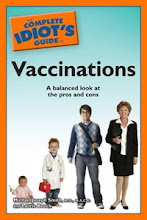Modern vaccines are extremely safe. Problems such as bacterial contamination of vaccines, a serious threat several generations ago, has been largely eliminated through the use of preservatives and improved packaging. Many older vaccines have also been reformulated to reduce the risk of side effects (such as the old DTP vaccine, and the earlier rotavirus vaccine for children).
The H1N1 vaccine is made in the same way as the seasonal flu vaccine. The viruses that cause the flu are grown and biologically weakened in chicken cells, until they are still strong enough to create an immune system response in people, but too weak to cause the disease in a healthy person. Then the weakened viruses are either:
- killed and used in the seasonal or H1N1 flu shot (the best choice for people with weakened immune systems or other risks), or
- kept alive and used in the seasonal or H1N1 flu nasal spray vaccine (the best choice for certain people with healthy immune systems).
The CDC tracks health problems that might be linked to vaccines with the Vaccine Adverse Event Reporting System (VAERS). Both health care providers and the general public can report health problems that occurred after a vaccination to VAERS. Researchers monitor VAERS, looking for patterns of problems with a vaccine. If a pattern does occur, then they do further research within the Vaccine Safety Datalink (VSD), a database containing the health records from eight managed-care organizations across the country.
What have they found since they have been tracking the H1N1 flu vaccine? The CDC's Dec 11 Morbidity and Mortality Weekly Report (MMWR) found that the risk of serious side effects (adverse events) from the H1N1 vaccine is about the same as the risk for the seasonal vaccine. In a word: low. From October through November 2009, VAERS data showed 82 adverse events per million doses of H1N1, and 47 adverse events per million doses of seasonal flu vaccine.
Still, the rumors are flying about the H1N1 vaccine: that it can cause Gulf War Syndrome or Guillain-Barre syndrome, that it contains Agent Orange, and so on. The website FactCheck.org's "Inoculation Misinformation" article provides a good overview and rebuttal of some of the questions that have cropped up in emails and online about the H1N1 vaccine.




